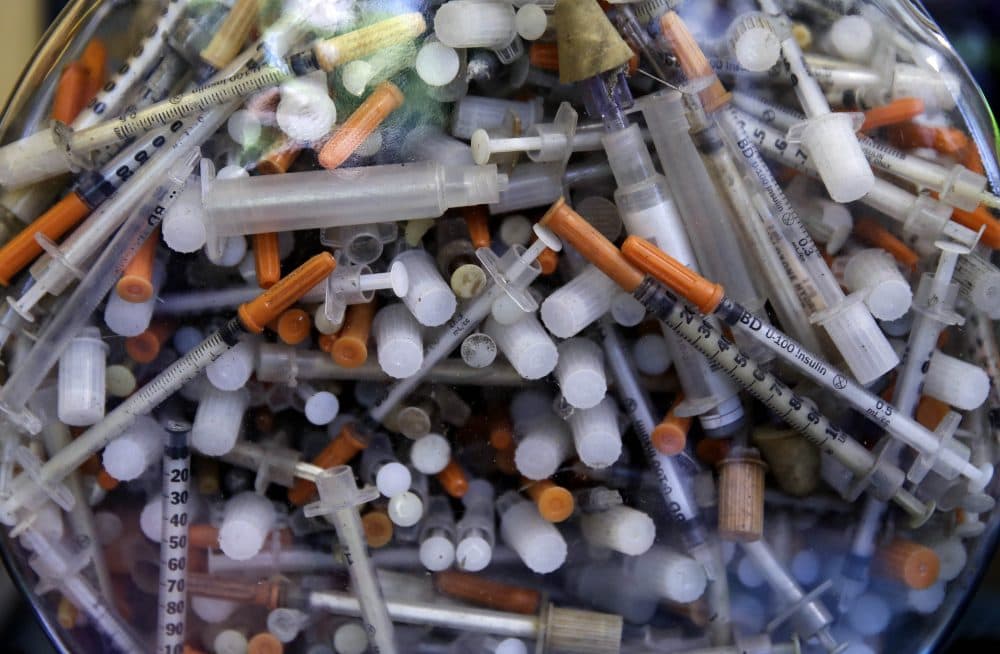Advertisement
Commentary
The Opioid Epidemic Needs A Strategy For Teens

Shortly after President Trump declared the opioid overdose crisis a national emergency, the Centers for Disease Control and Prevention reported that from 2014 to 2015 the drug overdose rate increased 19 percent for teens -- more than doubling the rate since 1999. The most common culprit: heroin.
This statistic highlights a simple but often overlooked fact: Addiction is frequently a childhood onset condition.
As pediatricians who treat addiction, we can attest to the toll of this crisis on young people. We recently cared for a 16-year-old boy who sat in our exam room reading a Harry Potter novel -- an alarming contrast to his addiction to opioid painkillers first prescribed after appendix surgery. We treated a 17-year-old girl on the inpatient ward for complications from injecting opioids who coped by surrounding her hospital bed with stuffed animals.
Any forward-thinking national overdose strategy needs to invest heavily early in the life course -- that is, in children and adolescents. To be successful, the strategy must prevent teens from initiating problematic opioid use in the first place, and expand access to evidence-based treatment for teens. The 21st Century Cures Act, passed in December 2016, appropriates $1 billion to states over two years to address opioid addiction. Most funds, however, will be allocated to treatment services for adults, with very little dedicated to preventive and treatment services for adolescents.
Many states have prevention programs in place, such as provider education on appropriate opioid prescribing, prescription monitoring programs, and campaigns advising parents of teens to lock up prescription opioid medications and dispose of old pills. While important, these do little to prevent or delay the initiation of teen opioid experimentation given how pervasive opioid pills and heroin are. Youth who begin using substances later in adolescence or young adulthood are less likely to develop addiction than those who start earlier; therefore, parents, schools, and community organizations need funding to implement programs that delay initiation of substance use. The Substance Abuse and Mental Health Services Administration has endorsed numerous evidence-based programs shown to delay teen substance use and durably protect youth into adulthood, including the Strengthening Families Program, a skills training intervention for teens and parents. Programs like these are ready for widespread dissemination, but require buy-in from states willing to make an upfront investment.
The other critical arm of an effective opioid strategy is ensuring availability of evidence-based treatment for youth. Intervening early when teens first develop signs of addiction can help avert a lifetime of harm. Yet, only one in 12 youth who need treatment for addiction receive it. Treatment spots are in short supply, pediatricians trained to treat addiction are rare, and insurance coverage is limited. Expanding access and reducing barriers to addiction care for teens should be national priorities.
Even when teens find treatment, many programs treat them alongside adults. Youth have unique developmental considerations and the traditional, sometimes punitive, rules of many treatment programs can drive young people away. As a result, they are only one-third as likely as older individuals to remain in treatment. Effective treatment for teens also should incorporate evidence-based medications, such as buprenorphine, methadone, and naltrexone, but often does not. Despite the recommendation by the American Academy of Pediatrics that they be offered to youth, only 2 percent of teens in treatment receive one, compared to 26 percent of adults. As federal and state agencies work to expand access to addiction treatment, they should dedicate funding to programs that will train providers on best practices to caring for teens with addiction.
Additionally, many young people arrive at treatment with a loved one only to learn that caregivers are kept out of the recovery process. Harnessing the support of family members offers a unique, yet underutilized, opportunity for treatment programs to foster long-term recovery. States should follow the lead of the Massachusetts Bureau of Substance Abuse Services and other similar agencies that invest in treatment programs that are family-centered.
We are facing a new reality: Our patients, who could be your next-door neighbor’s child or even your own, need help confronting the traditionally ‘adult’ problem of addiction. We must invest politically and financially in a long-term, comprehensive blueprint to curb the opioid epidemic and prevent today’s youth from becoming tomorrow’s overdose statistics.
Scott Hadland (scott.hadland@bmc.org, Twitter: @DrScottHadland) and Sarah Bagley (sarah.bagley@bmc.org) are pediatricians and specialists in adolescent addiction medicine at the Grayken Center for Addiction Medicine at Boston Medical Center.